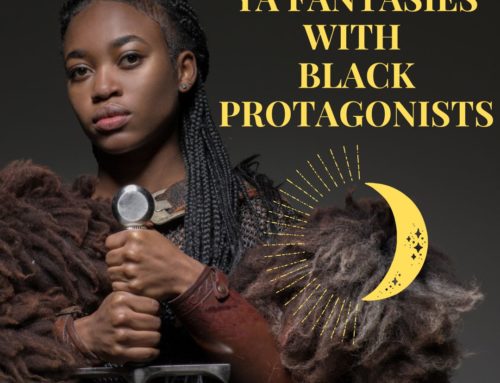 I, personally, find first drafts exciting. I’m that weird person who prefers first drafts over revising. But come in, it’s the first time you put your story down on paper! That’s exciting! It’s pouring out words from your mind and forming them into a plot, dialogue and molding characters. It’s an incredibly beautiful, and endlessly frustrating thing.
I, personally, find first drafts exciting. I’m that weird person who prefers first drafts over revising. But come in, it’s the first time you put your story down on paper! That’s exciting! It’s pouring out words from your mind and forming them into a plot, dialogue and molding characters. It’s an incredibly beautiful, and endlessly frustrating thing.
Without the first draft, you don’t have a story. No one can read your story if you don’t write it, hence why the first draft is a necessary evil. Sure, sometimes it feels like a mountain that grows taller as you climb. But I hope these tips I’ve discovered myself leave you feeling equipped and encouraged to tackle your own first draft.
The Goal:
The goal of a first draft is simply to get your story down. It’s about discovering components of your story. What’s the plot? Who are the characters and what are their personalities? What are the scenes and what order do they come in? And a thousand other questions you’ll learn about your story as you write.
The goal of your first draft is NOT to write something publishable. I repeat, your first draft will NOT be publishable. No one’s is. Jane Austen’s first drafts weren’t. Stephen King’s aren’t. Not even the first draft of Harry Potter was published. Just get the story down.
Before You Start:
- Decide what method you want to use to write your first draft. The two most common methods are the Plotter and the Panster. I am a Plotter. I create a detailed outline, visualize settings, and maybe do a character worksheet. I l like to know my story pretty well before I even write that first word. As a result, I tend to have more prep work before my first draft than most. But that’s me. You don’t have to do it that way. You could be a Pantser. A panster is someone who flies by the seat of their pants while they write. They either don’t outline or do a very skeletal outline and then start writing and see where the story takes them. They like to let the story lead them.
- Know the basics of your genre. If you’re writing a thriller, know the components your story needs to make it thrilling. If you’re writing a sci-fi novel, do you have a decent knowledge about what you’re writing about? Perhaps yours is a historical fiction. Do you know the history of the era you’re writing in? I write fantasy, which means I need to have a fairly good idea what this world I’m creating is like. You don’t have to have it all figured out at first, but you should know enough that you can write fairly uninterrupted.
- Set goals and deadlines. I create a calendar and write my word count goals for each day and week and say “I’m going to finish my first draft by this date.” Having goals gives me something to work towards. It keeps me writing even when I want to give up and watch Netflix.
- Really, the most important thing to remember to get through your first draft is the two steps to success: Sit & Write.
Tips & Tricks:
- No reference books. Don’t you dare pick up that thesaurus. Remember the goal of the first draft? Get your story down. In the first draft I recently wrote, I must have described angry as a burning rage inside my main character A THOUSAND TIMES. But that’s okay, because I got the story down. I’ll go back and fix that issue later.
- Turn off your internal editor. Grammar and prose are not important during a first draft. Plus, focusing on the small scale things keeps you from seeing the big picture of your novel. Here are things you should NOT focus on during the first draft:
- Grammar/spelling
- Details of language use/prose (i.e. how a sentence sounds/what words you use)
- First and last sentences
- Specific facts/dates (you can look it up later)
- Be your own voice. It’s great to read books by authors you love, but don’t let their voice become yours.You have your own unique style of writing, so don’t spend time trying to figure out how to mimic another author
- Take notes for future edits. When I’m writing a first draft, I always have a page next to me where I write down things I realize I need to go back and change in parts I’ve already written. This allows me to keep plowing ahead instead of constantly going back and revising. Please don’t be like me and go back and revise one chapter for every five you’ve written. You’ll get nothing done and end up revising the same chapter a million times because the story evolves a million times throughout the first draft.
- Don’t become chained to your outline. This is where I struggle. I’m a plotter, which means I have a pretty detailed outline. But remember how I said one of the goals of a first draft is to discover your story? Allow for unplanned things to happen. Go with the flow. If your outline says this character goes right, but as you’re writing you realize the character wants to go left, let them go left by all means!
- Use placeholders. I am THE WORST at coming up with names. Names of people, places, animals, rivers, you name it, and I probably can’t name it. But I don’t want this to get in the way of my story. So I use placeholder names in the first draft. Nearly all my first drafts have a main character named Luna from Ohio. You can figure out names after and then do a find and replace.
- Do writing sprints when your pace slows. When I find my word count growing sluggish, I like to do word sprints. I’ll set the timer for 30 minutes (or less, but never more) and write as many words as I can before the timer goes off. The added pressure makes me plow forward through the words and prevents me stopping and thinking too much. I find these sprints provide the bolt of energy I need to keep going.
Don’t Give Up:
Writing a first draft is hard. It’s a lot of work and lots of lies can seep into your head. I can’t tell you the number of times I’ve said to myself “You’re a horrible writer,” “Why are you doing this? You can’t do this,” or “You’ll never be good enough to get published.”
Here are some things I found helpful in pushing through these moments and maintaining motivation:
- Momentum is everything. I have to write nearly every day to maintain that excitement of writing. Plus, when I’m writing, my mind is distracted from the negative thoughts
- Don’t forget, the first draft is just a layer of the final product. You can add more later.
- Give yourself permission to keep writing even when your writing is awful. First drafts are terrible. They are usually not representative of the final work Accept that it won’t be perfect. Just keep writing.
- Your first draft is not a reflection of your ability as a writer. I think this is the most important one for me personally to remember. I thought that if my first draft sucked, it meant I sucked as a writer. Not true. My books get so much better through rounds of revisions and yours will too. I told my friend once that I think the difference between a good writer and a bad one is a good writer never gives up.
- Remember, you’re not perfect. Your first draft won’t be perfect. And that’s okay.
Awesome, now you know all the insider tricks to writing a first draft. But how do you know when it’s done? When you type “The End.” Those are two of the most rewarding words a writer will ever know. And once you type them after you’ve written your first draft, I want you to go celebrate because writing a first draft is seriously a big deal.
Want to know something fun? This post you’re reading is NOT the first draft I wrote for the post. That’s right, the first draft was way too long and had too much unnecessary information. It was bad. But I still wrote it. And since I wrote it, I had something to go back and revise. And now it’s posted for you to enjoy and hopefully learn from.
I read once that first drafts are the scaffolding you build so that you can build your skyscraper. You can’t build a skyscraper without scaffolding, and you can’t finish a novel without a first draft.
Now, go sit and write.



